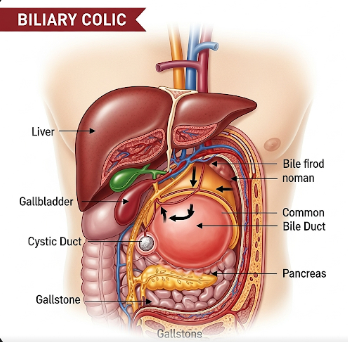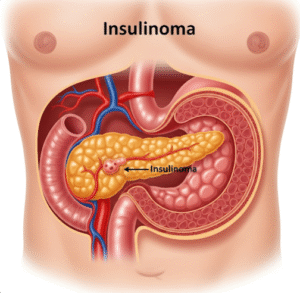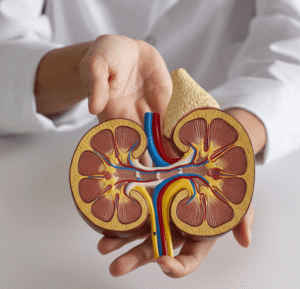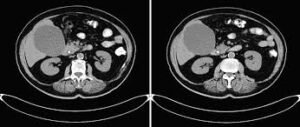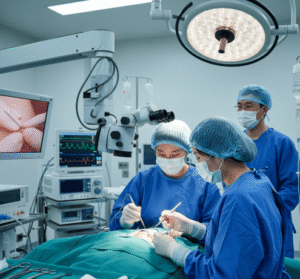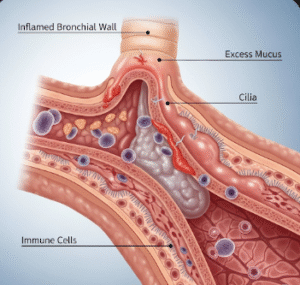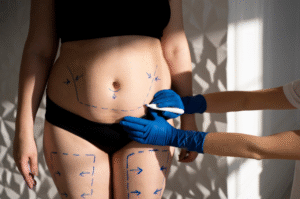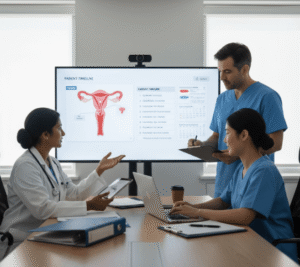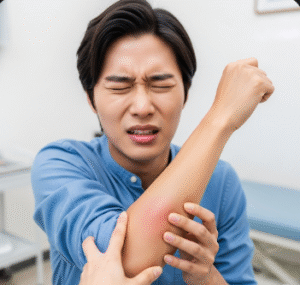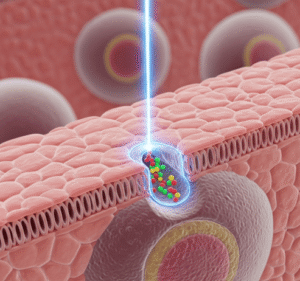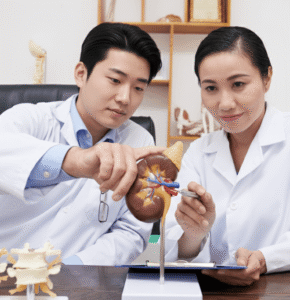Overview
Biliary colic is a type of abdominal pain caused by the obstruction of the bile ducts, typically due to gallstones (cholelithiasis). The pain is usually sudden, severe, and intermittent, often occurring in the right upper quadrant of the abdomen and sometimes radiating to the back or right shoulder.
In South Korea, gastroenterology and hepatobiliary clinics provide comprehensive diagnosis and treatment for biliary colic, including imaging, minimally invasive procedures, and surgical interventions to manage gallstones and relieve symptoms.
Key Facts
Highlights:
➡️ Biliary colic results from the temporary obstruction of bile flow, most commonly by gallstones.
➡️ Pain is typically severe, steady, and may last from 30 minutes to several hours.
➡️ Triggers often include fatty meals, which stimulate gallbladder contraction.
➡️ Nausea, vomiting, and sweating may accompany the pain.
➡️ South Korea offers advanced laparoscopic surgery and non-surgical management for gallstone disease.
What is Biliary Colic?
Biliary colic occurs when a gallstone temporarily blocks the cystic duct or common bile duct, causing pressure buildup in the gallbladder.
Characteristics of biliary colic include:
- Severe, cramp-like or steady pain in the right upper abdomen
- Pain radiating to the right shoulder or back
- Often occurs after heavy or fatty meals
- Usually resolves spontaneously once the stone moves or dislodges
- May be recurrent, depending on the presence and movement of gallstones
Although called “colic,” the pain is often constant rather than intermittent once it starts.
What Symptoms are Related to Biliary Colic?
Symptoms may include:
- Intense pain in the right upper abdomen or epigastric region
- Pain radiating to the right shoulder, scapula, or back
- Nausea and vomiting, sometimes with sweating
- Bloating or abdominal fullness
- Occasional mild jaundice if bile ducts are partially obstructed
- Tenderness over the gallbladder area on palpation
- Episodes often last 30 minutes to several hours and resolve spontaneously
Highlights:
➡️ Symptoms are typically triggered by fatty meals.
➡️ Pain is predictable and recurrent in many patients.
What Causes / Possible Causes of Biliary Colic?
Highlights:
➡️ Gallstones (Cholelithiasis): The most common cause; stones block bile flow.
➡️ Biliary Sludge: Thickened bile or small particulate matter may obstruct ducts.
➡️ Anatomic Abnormalities: Narrow bile ducts or gallbladder dysfunction.
➡️ Rapid Weight Loss or Fasting: Alters bile composition, increasing stone formation.
➡️ Pregnancy or Hormonal Changes: Estrogen can affect bile composition.
➡️ Obesity and Metabolic Factors: Increased cholesterol in bile promotes stone formation.
➡️ Dietary Triggers: High-fat meals stimulate gallbladder contraction, precipitating pain.
➡️ Rare Causes: Tumors or strictures of the bile ducts.
When Should I See My Doctor?
Highlights:
➡️ If you experience severe, recurrent abdominal pain in the right upper quadrant.
➡️ If pain is associated with fever, chills, or jaundice, which may indicate infection or obstruction.
➡️ For nausea, vomiting, or inability to tolerate food, early evaluation prevents complications.
➡️ Persistent or worsening symptoms warrant imaging and specialist consultation.
➡️ Early assessment allows prompt treatment, reducing risk of gallbladder inflammation or biliary obstruction.
Care and Treatment
Management of biliary colic focuses on pain relief and treatment of underlying gallstones:
Highlights:
➡️ Acute Pain Management: Analgesics, nonsteroidal anti-inflammatory drugs (NSAIDs), or opioids for severe episodes.
➡️ Dietary Modification: Avoid fatty foods to prevent triggering attacks.
➡️ Hydration and Supportive Care: Ensures comfort and prevents dehydration from vomiting.
➡️ Monitoring for Complications: Cholecystitis, cholangitis, or pancreatitis may develop if obstruction persists.
➡️ Surgical Intervention: Laparoscopic cholecystectomy is the definitive treatment for symptomatic gallstones.
➡️ Non-Surgical Options: In selected cases, bile acid therapy or endoscopic procedures may be considered.
➡️ Patient Education: Understanding triggers, recognizing warning signs, and timely consultation with healthcare providers.
Treatment Options in Korea
South Korea provides advanced hepatobiliary care for biliary colic:
Highlights:
➡️ Gastroenterology and Hepatobiliary Clinics: Full diagnostic evaluation including ultrasound, CT, or MRCP.
➡️ Minimally Invasive Surgery: Laparoscopic cholecystectomy is widely available and performed with high success rates.
➡️ Endoscopic Procedures: ERCP (Endoscopic Retrograde Cholangiopancreatography) for stone removal in bile ducts.
➡️ Dietary and Lifestyle Counseling: Nutrition guidance to prevent stone formation and recurrence.
➡️ Pain Management Services: Acute pain control during biliary colic episodes.
➡️ Multidisciplinary Approach: Collaboration among surgeons, gastroenterologists, dietitians, and nursing staff.
➡️ Medical Tourism Support: Multilingual consultations, structured treatment pathways, and follow-up care for international patients.

